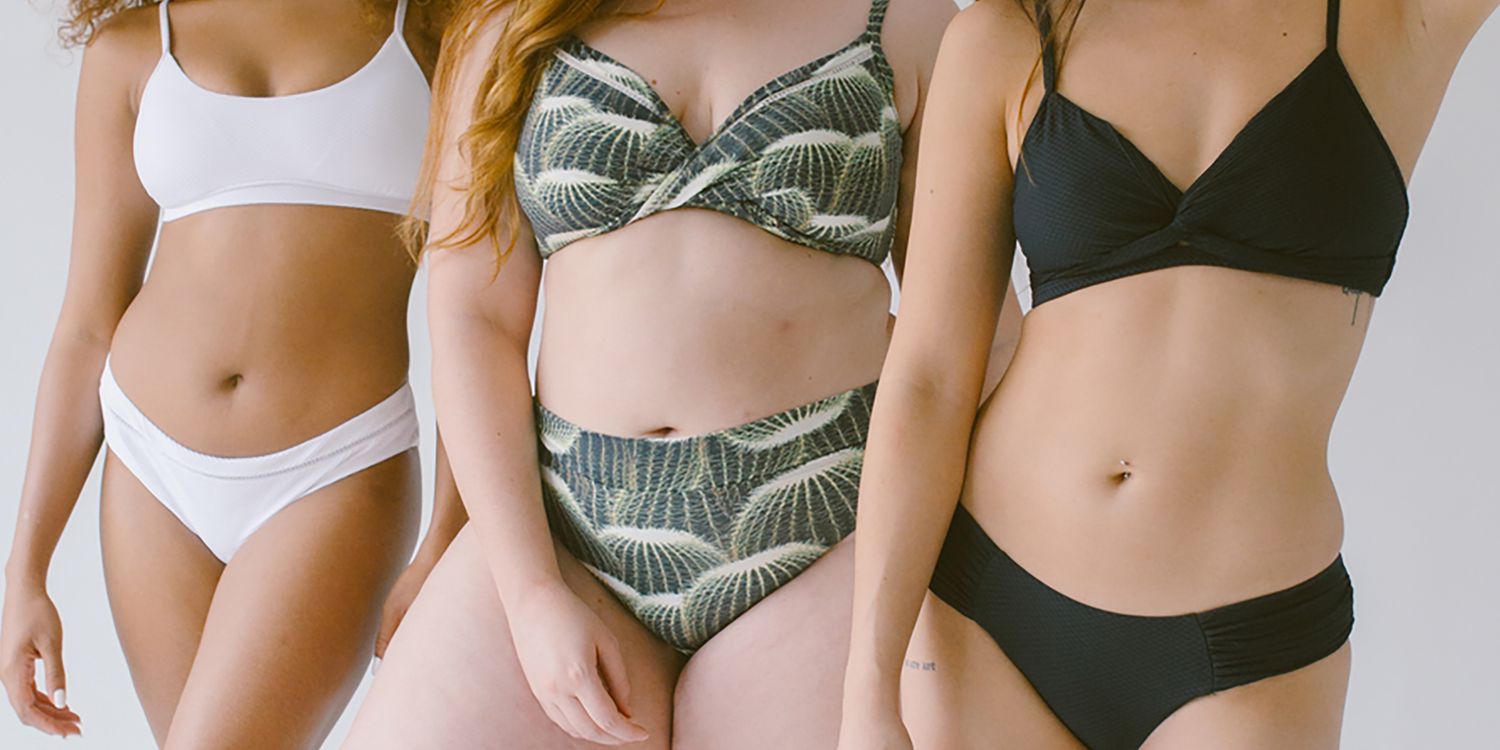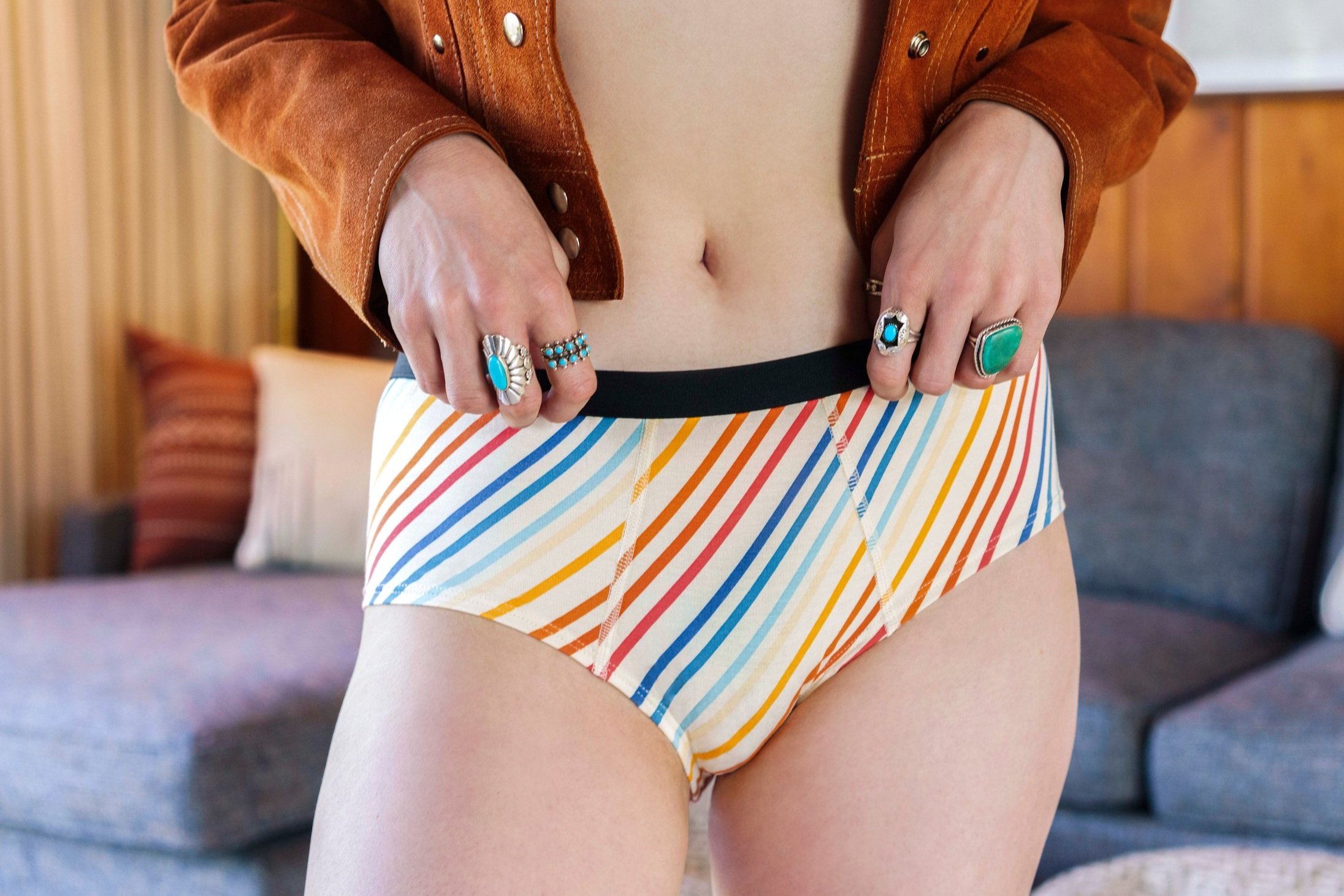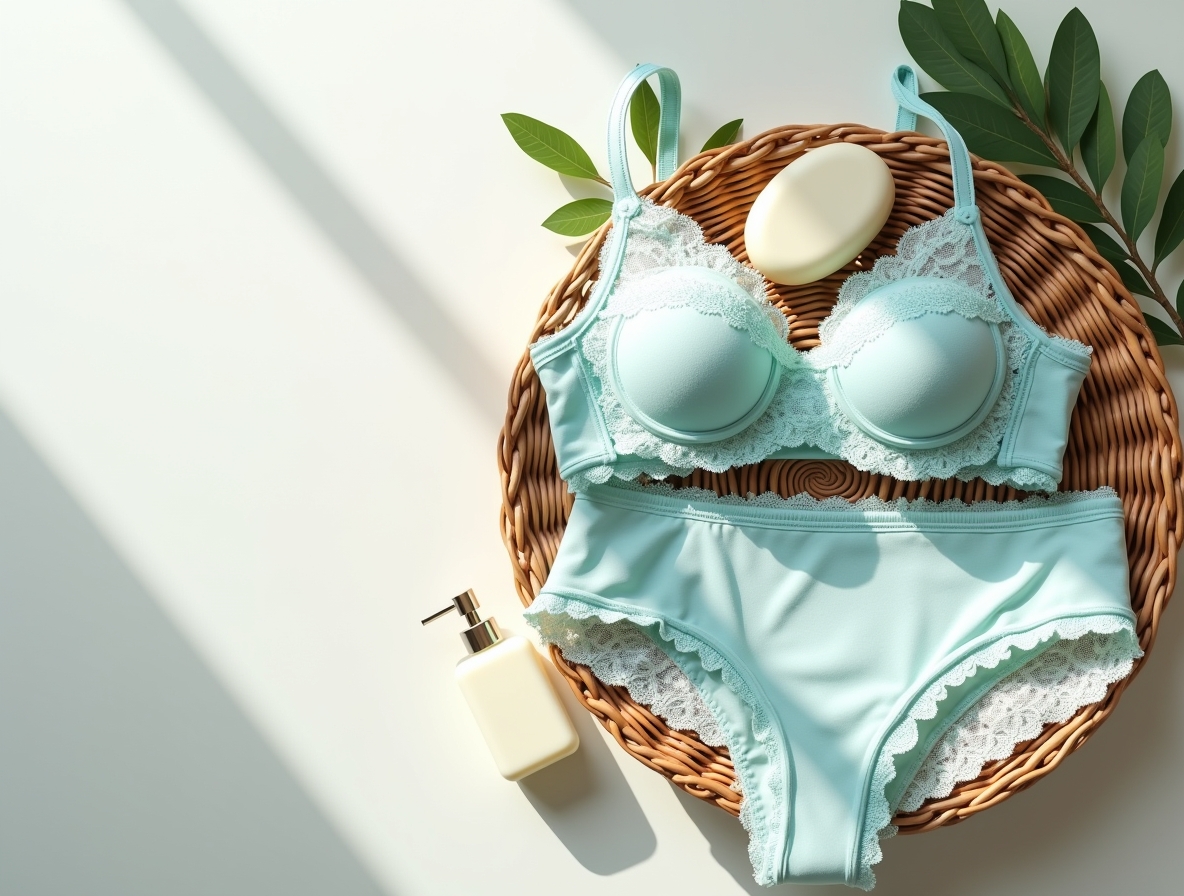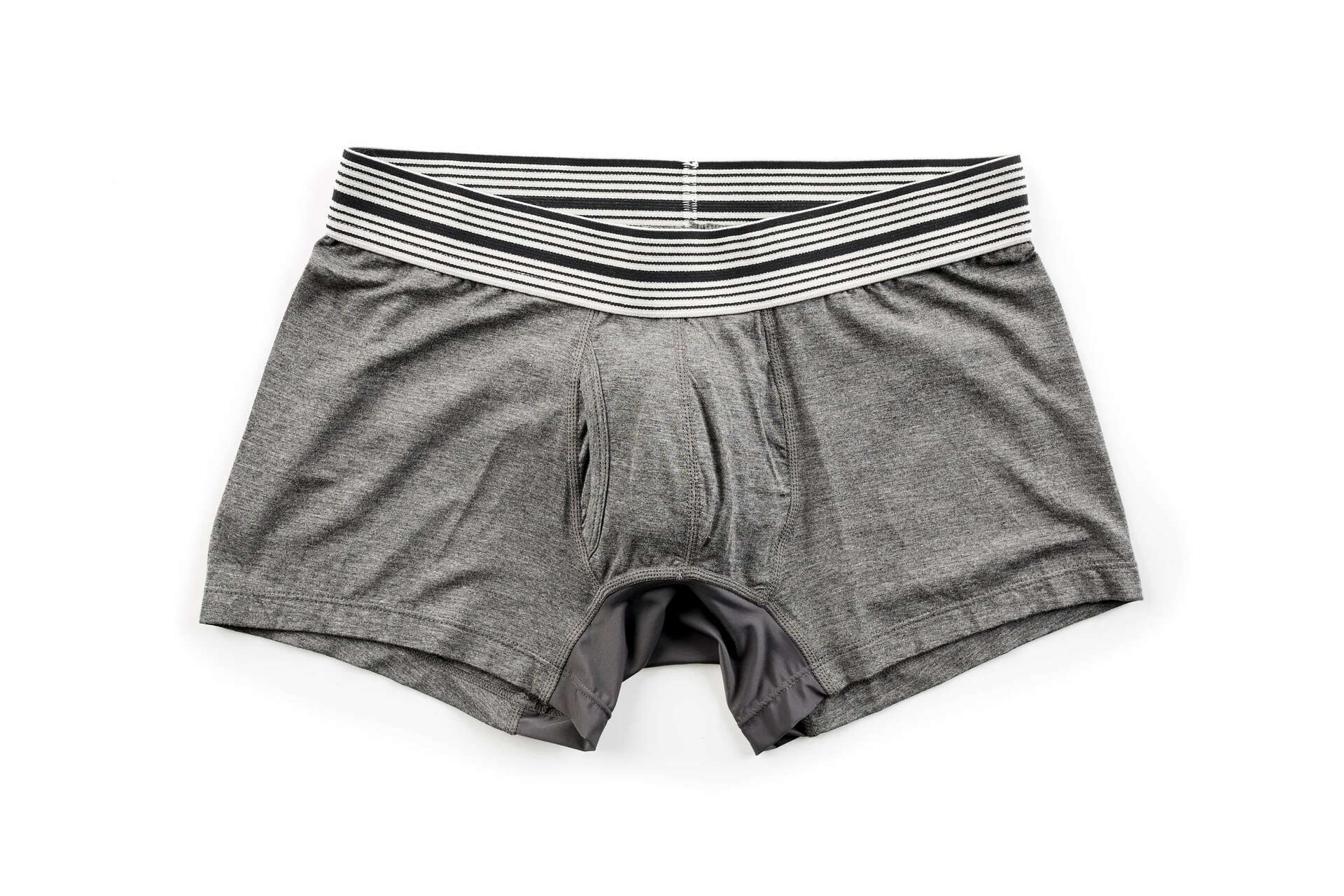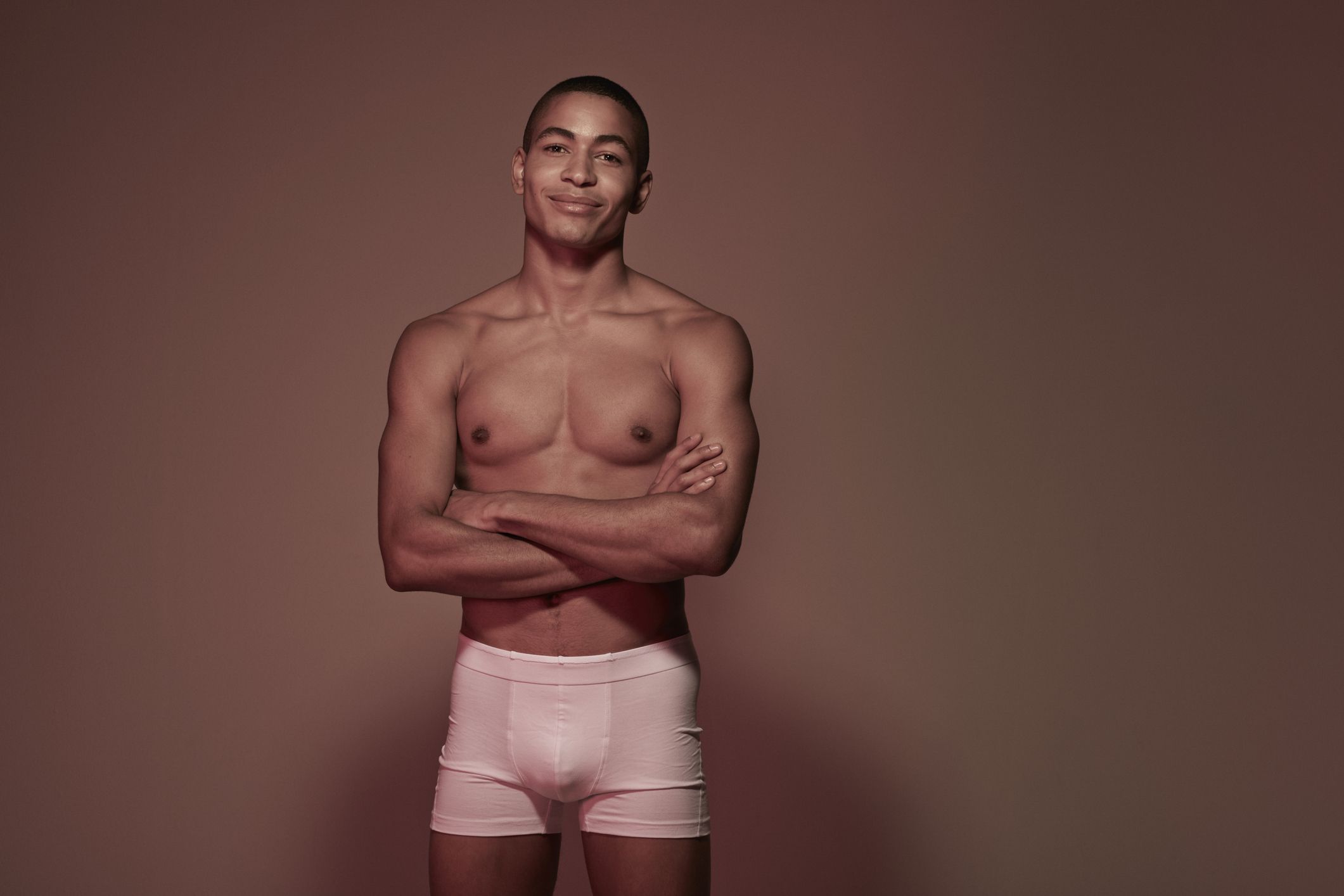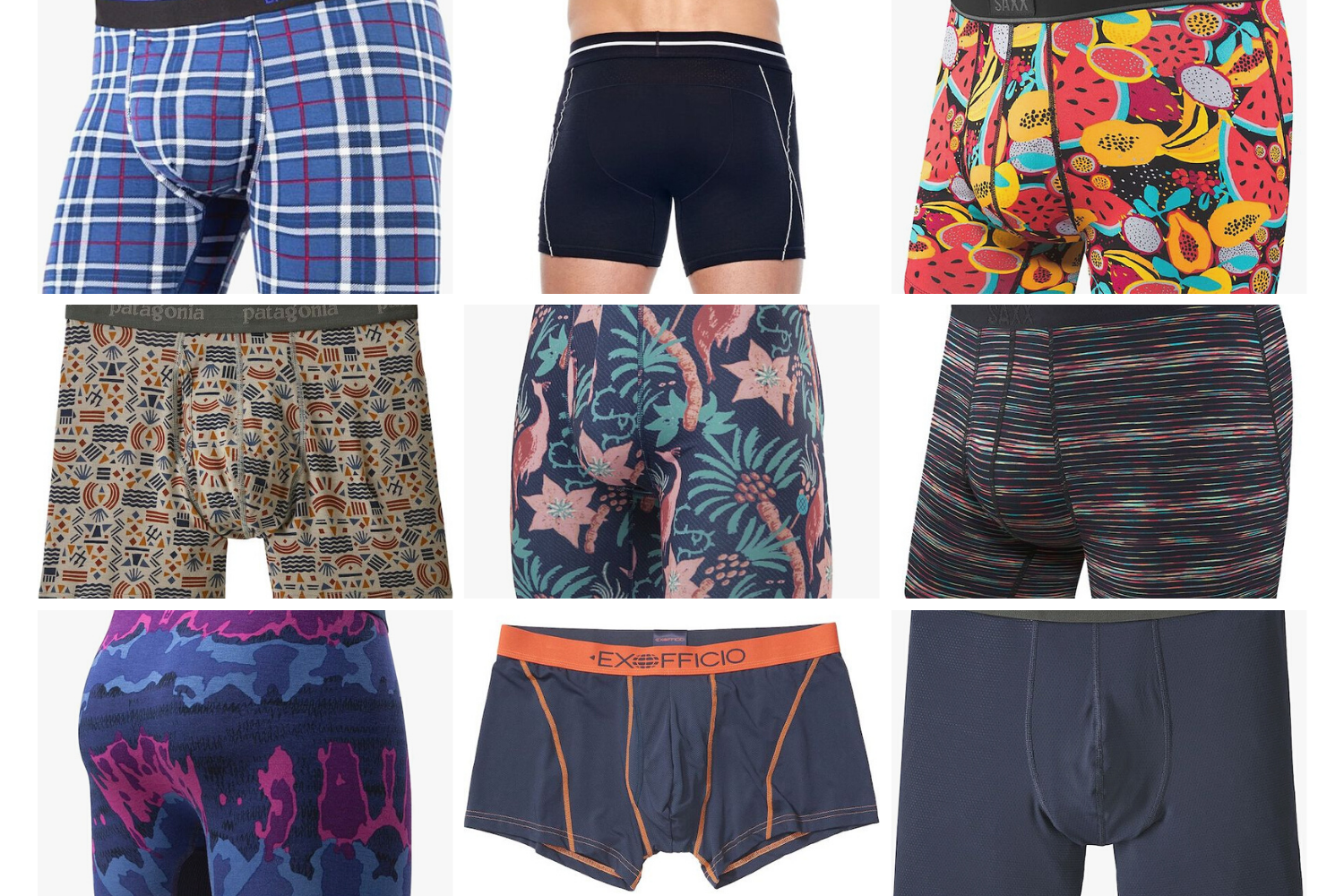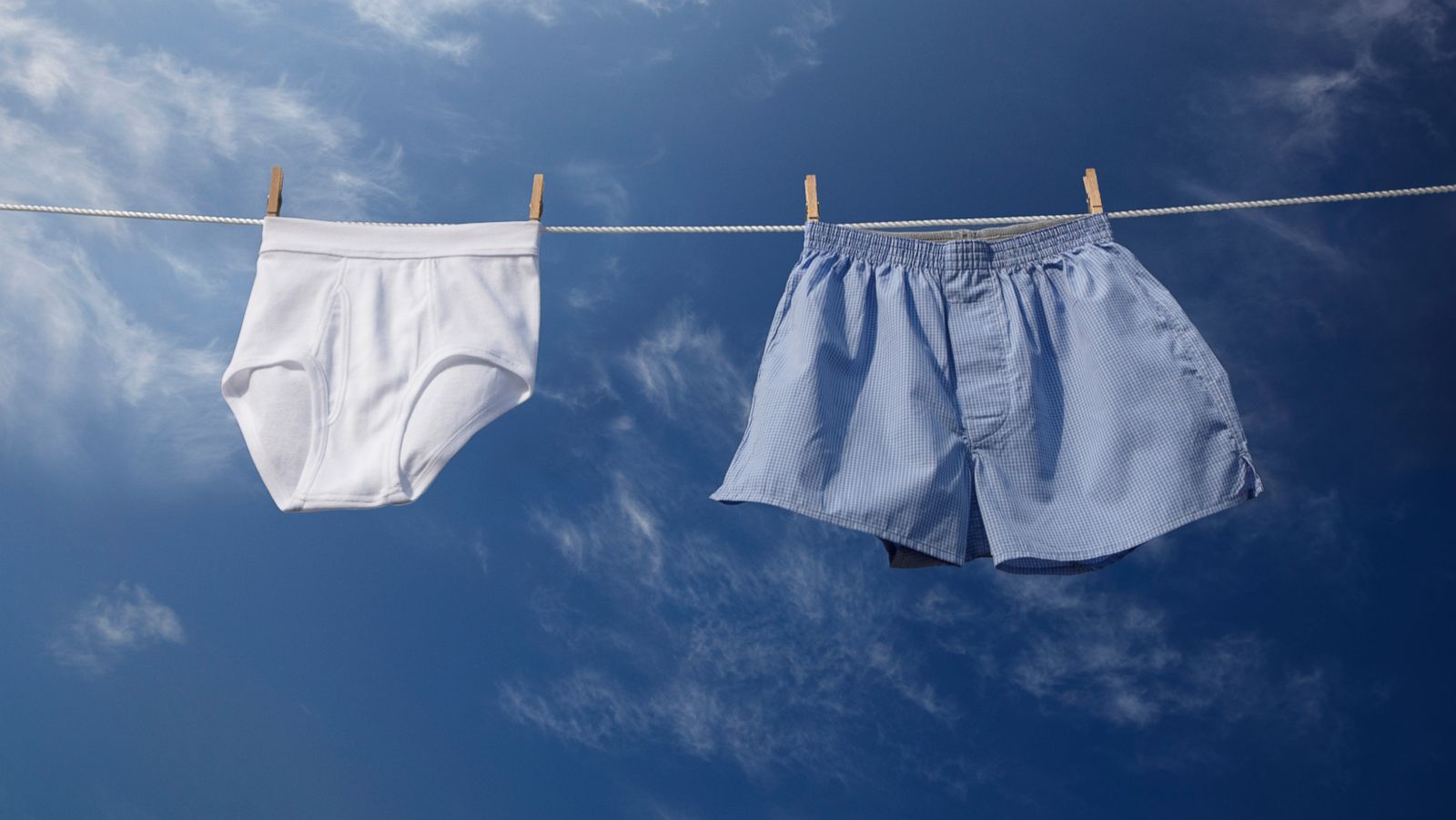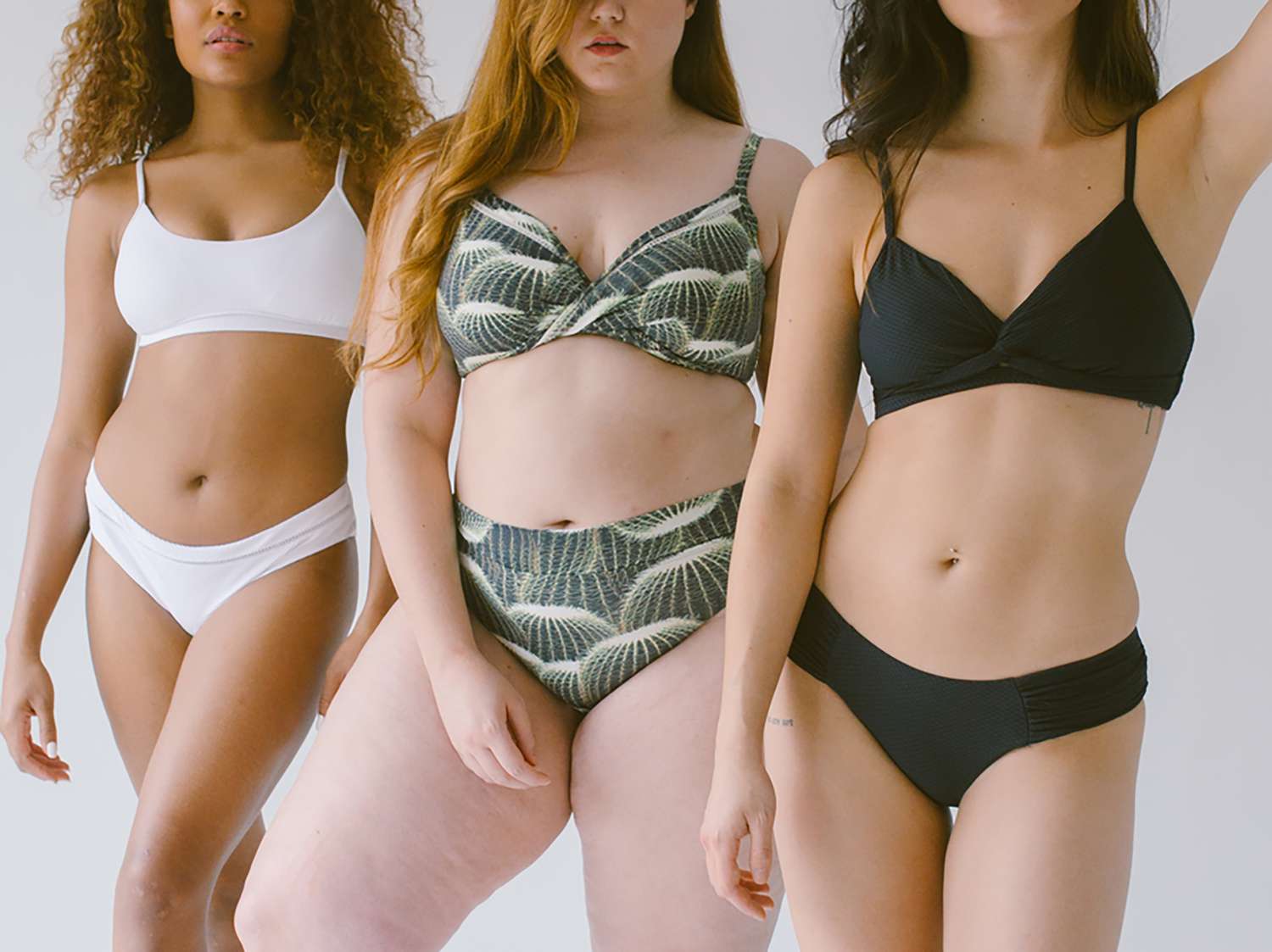Home>Athletic Underwear>What Is The Difference Between Boxer Briefs And Trunks
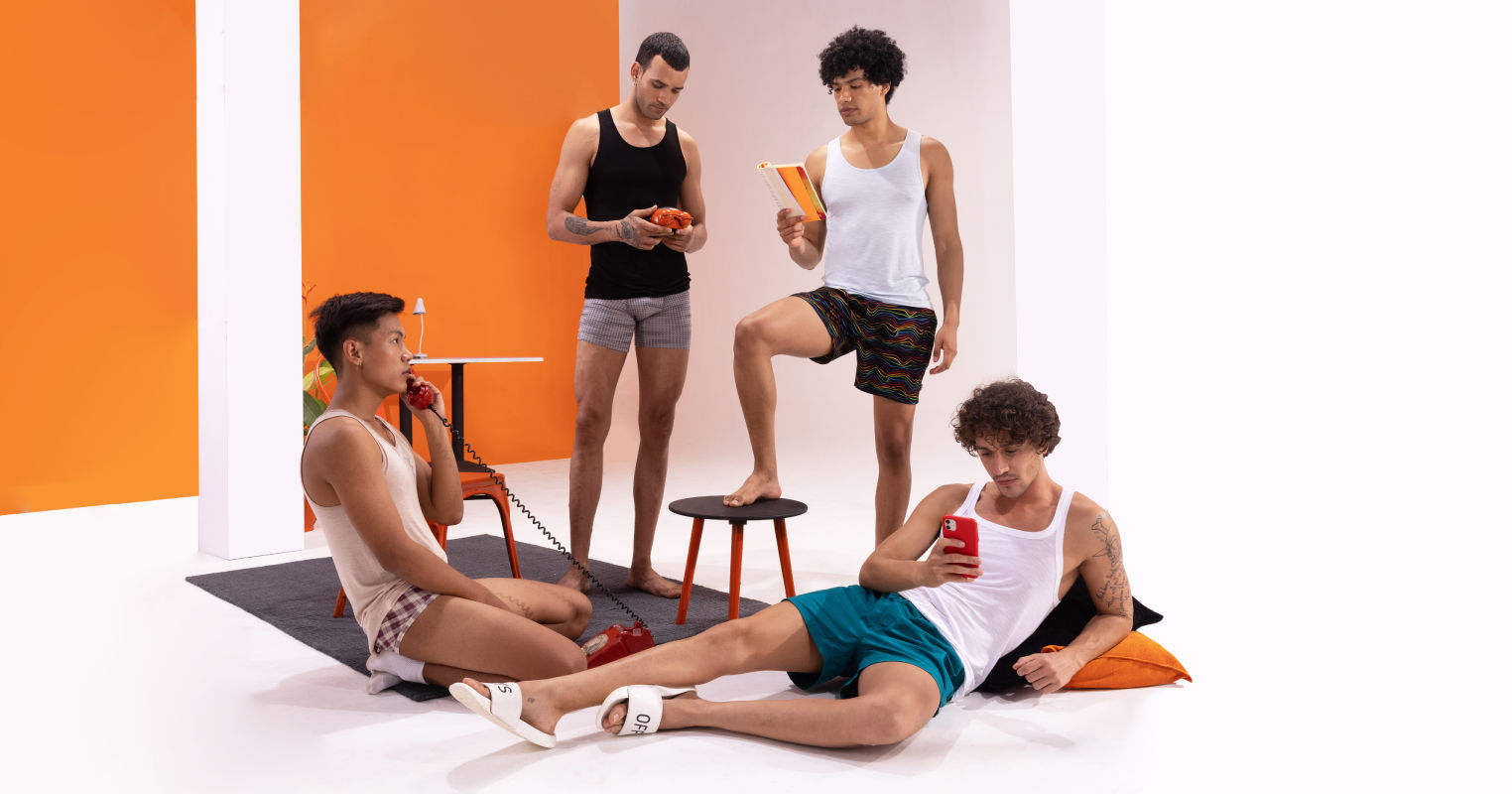

Athletic Underwear
What Is The Difference Between Boxer Briefs And Trunks
Modified: September 23, 2023
Discover the key differences between boxer briefs and trunks for men. Find out which style is the perfect fit for your comfort and lifestyle.
(Many of the links in this article redirect to a specific reviewed product. Your purchase of these products through affiliate links helps to generate commission for Under-tec.com, at no extra cost. Learn more)
Table of Contents
Introduction
When it comes to men’s underwear, there are several different styles to choose from. Two popular options that offer both comfort and support are boxer briefs and trunks. While they may seem similar at first glance, there are notable differences between the two. Understanding these differences can help you make an informed decision and find the style that best suits your needs and preferences.
Boxer briefs combine the best of both worlds, offering the coverage of traditional boxers with the snug fit of briefs. Trunks, on the other hand, are a shorter and more form-fitting version of boxer briefs. Each style has its unique design elements, including differences in length, leg openings, waistbands, and overall fit.
In this article, we will explore the difference between boxer briefs and trunks in terms of design, coverage, length, waistband, material, style, support, and functionality. By the end, you will have a clear understanding of the nuances of these styles and be able to make an informed decision about which style is right for you.
Definition of Boxer Briefs
Boxer briefs are a hybrid style of underwear that combine the loose-fitting design of traditional boxers with the snug fit of briefs. They offer the best of both worlds, providing the coverage and comfort of boxers along with the supportive fit of briefs.
Boxer briefs typically feature a longer leg length than briefs, extending down to the mid-thigh or just above the knee. This added coverage helps prevent ride-up and offers a more secure fit. The leg openings are usually fitted, helping to keep the underwear in place throughout the day.
One notable characteristic of boxer briefs is their versatility. They are suitable for various activities, including everyday wear, sports, and lounging. The supportive design and snug fit make them an excellent option for men who want both comfort and support. Additionally, boxer briefs offer a streamlined look that can be worn under any type of pants or shorts.
Boxer briefs are available in a wide range of materials, including cotton, modal, microfiber, and performance fabrics. These fabrics are chosen for their breathability, moisture-wicking properties, and softness against the skin. The waistband of boxer briefs is typically elastic and may feature a logo or branding.
In summary, boxer briefs are a popular style of men’s underwear that combines the comfort and coverage of boxers with the supportive fit of briefs. They offer a versatile option suitable for various activities and provide a streamlined look under clothing. The longer leg length and fitted leg openings ensure a secure fit, while the choice of materials and waistband design add to the overall comfort and style of this underwear style.
Definition of Trunks
Trunks are a style of men’s underwear that is shorter and more form-fitting than boxer briefs. They are often referred to as “short boxer briefs” or “square-cut” because of their square-shaped design. Trunks offer a modern and sleek look while providing excellent support and comfort.
One of the main features that distinguish trunks from other styles of underwear is their shorter leg length. Trunks typically have a leg length that falls between the upper thigh and the mid-thigh, offering a more contoured fit compared to boxer briefs. The leg openings of trunks are snug, providing a secure feel and minimizing any chance of ride-up.
Trunks are designed to be both stylish and functional. They offer a streamlined appearance, making them ideal for wearing under fitted pants or slim-cut jeans. The form-fitting design enhances the overall fit, allowing for unrestricted movement and a more confident stride.
Similar to boxer briefs, trunks are available in various materials such as cotton, modal, and performance fabrics. These materials are chosen for their breathability, softness, and moisture-wicking properties. The waistband of trunks is typically elastic and may feature a logo or branding, similar to boxer briefs.
Trunks have gained popularity in recent years due to their modern aesthetic and versatility. They are favored by those who prefer a more fitted and streamlined underwear option, and they can be worn for a variety of activities, including sports, everyday wear, and date nights.
In summary, trunks are a shorter and more form-fitting style of men’s underwear. They offer a modern and sleek look while providing excellent support and comfort. The shorter leg length and snug leg openings make them ideal for wearing under fitted pants or slim-cut jeans. With a choice of breathable materials and an elastic waistband, trunks offer both style and functionality for the modern man.
Design and Coverage
When it comes to design and coverage, both boxer briefs and trunks have their distinct features. Understanding the differences in these aspects can help you determine which style suits your preferences and needs.
Boxer briefs are known for their longer leg length, typically extending down to the mid-thigh or just above the knee. This longer length provides more coverage and helps prevent the underwear from riding up during movement. The fitted leg openings of boxer briefs further enhance the coverage, ensuring a secure fit throughout the day. This design is especially beneficial for individuals who prefer a more traditional boxer look with added support.
On the other hand, trunks feature a shorter leg length, sitting between the upper thigh and mid-thigh. This shorter design offers less coverage compared to boxer briefs, but it provides a sleek and modern look. The snug leg openings of trunks help maintain their position and prevent any irritating ride-up that can occur with longer styles of underwear.
The different designs of boxer briefs and trunks allow for versatility in terms of the types of clothing they can be worn with. Boxer briefs, with their longer leg length, are ideal for wearing under loose-fitting pants or shorts. They provide additional coverage and prevent chafing, making them suitable for activities like exercising or lounging.
Trunks, with their shorter leg length and form-fitting design, are perfect for wearing under fitted pants or slim-cut jeans. The streamlined appearance of trunks eliminates any bulkiness or visible lines, offering a sleek and confident look. This makes trunks a popular choice among those who prefer a more fashion-forward and modern underwear style.
In summary, boxer briefs and trunks differ in design and coverage. Boxer briefs offer a longer leg length and fitted leg openings, providing ample coverage and support. Trunks, with their shorter leg length and snug leg openings, offer a more minimalist and modern look. The choice between the two styles depends on personal preference, intended use, and the desired aesthetic under different types of clothing.
Length and Leg Openings
The length and leg openings of underwear play a crucial role in determining the fit, comfort, and appearance. When comparing boxer briefs and trunks, these aspects differ significantly, catering to different preferences and needs.
Boxer briefs are known for their longer leg length, typically extending down to the mid-thigh or just above the knee. This extended length offers more coverage and helps prevent the underwear from riding up during movement. The leg openings of boxer briefs are generally fitted, ensuring a secure fit on the thighs. This design not only adds to the comfort by reducing the possibility of chafing but also provides a neater and more structured appearance under clothing.
Trunks, on the other hand, have a shorter leg length, usually sitting between the upper thigh and mid-thigh. This shorter design allows for a more contoured fit and reduces excess fabric, making trunks a preferred choice for those who prefer a sleek and minimalist look. The leg openings of trunks are snug, providing a secure feel and minimizing any chance of ride-up. The fitted leg openings also contribute to a clean and streamlined appearance, making trunks an ideal choice for wearing under fitted clothing.
The shorter leg length and snug leg openings of trunks make them well-suited for activities that require a greater range of movement, such as sports or workouts. The reduced fabric and secure fit allow for unrestricted movement while maintaining comfort and support. Additionally, the snug leg openings of trunks prevent them from becoming visible under shorts or other athletic wear, ensuring a polished look.
In summary, the length and leg openings of boxer briefs and trunks vary to accommodate different preferences and needs. Boxer briefs with their longer leg length and fitted leg openings offer more coverage and structure, making them suitable for everyday wear and activities that require additional support. Trunks, with their shorter leg length and snug leg openings, provide a sleek and contoured fit, making them the preferred choice for those who want a minimalist and modern look, as well as unrestricted movement during physical activities.
Waistband
The waistband of underwear plays a crucial role in providing a secure fit and ensuring overall comfort. When comparing boxer briefs and trunks, there are noticeable differences in the waistband design.
Boxer briefs typically feature an elastic waistband that sits comfortably around the waist. The elastic band provides a secure fit without being overly tight or restrictive. The waistband may also feature a logo or branding, adding a stylish touch to the design. The width of the waistband can vary, with some styles offering a wider band for added support and comfort. The elastic waistband of boxer briefs helps to keep the underwear in place throughout the day, preventing any unwanted slipping or bunching.
Trunks also feature an elastic waistband, designed to sit comfortably around the waist. The waistband of trunks is typically narrower compared to that of boxer briefs, offering a more minimalistic aesthetic. Despite the narrower width, the elastic waistband of trunks still provides a secure fit and ensures that the underwear stays in place during activities. Many trunk styles also include a logo or branding on the waistband, adding a touch of style to the overall design.
Both boxer briefs and trunks prioritize comfort and functionality in their waistband design. The elastic waistbands of these styles allow for a custom fit while providing support and flexibility. The secure fit ensures that the underwear stays in place, allowing for freedom of movement without the need for constant adjustments.
In summary, boxer briefs and trunks feature an elastic waistband that provides a secure and comfortable fit. While boxer briefs often have a wider waistband, trunks typically have a narrower waistband for a more minimalist look. Regardless of the width, the elastic waistbands of both styles ensure that the underwear stays in place throughout the day, offering the necessary support and comfort.
Material and Comfort
The choice of material used in underwear significantly impacts its comfort and overall feel against the skin. Both boxer briefs and trunks are available in a range of materials, each offering unique characteristics and benefits.
Boxer briefs are typically made from materials such as cotton, modal, microfiber, and performance fabrics. Cotton is a popular choice for its breathability, softness, and natural moisture-wicking properties. Modal, a type of rayon fabric, is known for its silky texture and excellent moisture management. Microfiber is a synthetic fabric that offers a smooth feel, enhanced breathability, and quick-drying capabilities. Performance fabrics, such as moisture-wicking blends or specialized athletic materials, are often used in boxer briefs designed for active wear, providing additional comfort and support during physical activities.
Trunks also come in various materials, including cotton, modal, and performance fabrics. The choice of material in trunks is similar to that of boxer briefs, offering breathability, softness, and moisture-wicking properties. This ensures a comfortable wearing experience throughout the day. Trunks made from performance fabrics are particularly popular for their ability to keep the body dry and cool during high-intensity activities.
Regardless of the material choice, both boxer briefs and trunks prioritize comfort. The fabrics used are often selected for their ability to provide a soft and smooth feel against the skin, reducing any irritation or discomfort. The moisture-wicking properties of many materials help to keep the body dry by efficiently absorbing and evaporating sweat. This not only enhances comfort but also reduces the chances of chafing and odors.
In summary, both boxer briefs and trunks come in an array of materials that prioritize comfort and functionality. The choice of material depends on personal preference, as well as specific needs such as breathability and moisture-wicking properties. Whether it is cotton, modal, microfiber, or performance fabrics, the materials used in these styles of underwear ensure a comfortable and enjoyable wearing experience.
Style and Fashion
When it comes to men’s underwear, style and fashion are important considerations for many individuals. Both boxer briefs and trunks offer their unique styles and aesthetics, allowing for personal expression and complementing various fashion choices.
Boxer briefs have a classic and timeless appeal. With their longer leg length, they provide a more traditional boxer look while offering the support and fit of briefs. This style is favored by those who appreciate a more conservative and modest appearance. The fitted leg openings and straight-cut design of boxer briefs also contribute to a neat and structured look. Boxer briefs are available in a wide range of colors, patterns, and designs, allowing individuals to find options that suit their personal style.
On the other hand, trunks have gained popularity for their modern and sleek aesthetic. With their shorter leg length and form-fitting design, trunks offer a minimalist and fashionable look. Trunks are often favored by individuals who prefer a more contemporary and tailored appearance. The snug leg openings and square-cut design of trunks provide a clean and streamlined look under clothing. Trunks come in various colors, patterns, and designs, allowing for individual expression and versatility.
Both boxer briefs and trunks offer a range of options to match different fashion choices and occasions. From basic solid colors to bold prints and patterns, there are styles available to suit every preference. Additionally, some brands offer underwear with special features like logo waistbands or unique stitching details, adding an extra touch of style and sophistication.
Wearing underwear that aligns with personal style not only boosts confidence but also enhances the overall fashion aesthetic. Whether it’s choosing a classic and traditional look with boxer briefs or a contemporary and sleek look with trunks, the style options available in both styles of underwear allow individuals to express their personality and fashion sense.
In summary, both boxer briefs and trunks offer style and fashion options to suit individual preferences. Boxer briefs provide a classic and timeless look, while trunks offer a modern and sleek aesthetic. The versatility in colors, patterns, and designs allows individuals to express their personal style, enhancing their overall fashion appeal.
Support and Functionality
Support and functionality are important factors to consider when choosing underwear. Both boxer briefs and trunks offer different levels of support and functional features that cater to various needs and activities.
Boxer briefs are known for providing excellent support due to their snug fit. The combination of the form-fitting design and the longer leg length provides ample support to the groin area, ensuring everything stays in place. This level of support makes boxer briefs a popular choice for physical activities, such as sports or workouts, as well as for individuals who prefer extra support throughout the day.
Trunks, although shorter in length, also offer adequate support due to their snug fit and contoured design. The form-fitting shape of trunks helps provide support to the groin area without compromising on comfort. This makes trunks a reliable option for those who prefer a more streamlined look while still requiring support during activities or daily movement.
Both styles of underwear prioritize functionality by minimizing ride-up. The fitted leg openings of boxer briefs and trunks help prevent the underwear from bunching or riding up, ensuring a comfortable fit that stays in place throughout the day. The reduced chance of ride-up also eliminates the need for constant adjustments, allowing individuals to focus on their activities without any distractions.
In addition to support and ride-up prevention, boxer briefs and trunks offer other functional features. Many brands incorporate moisture-wicking properties into the fabrics used, helping to keep the body dry and comfortable by quickly absorbing and evaporating sweat. This feature is particularly beneficial during physical activities or in warmer climates.
Furthermore, some boxer briefs and trunks come with additional features such as odor control technology, specialized seams for reduced chafing, and breathable panels in specific areas. These functional enhancements contribute to an overall comfortable and functional wearing experience.
In summary, both boxer briefs and trunks provide support and functionality in different ways. Boxer briefs offer a snug and supportive fit with their form-fitting design and longer leg length, making them suitable for various activities. Trunks, with their shorter length and contoured fit, also offer support while providing a more minimalist and streamlined look. Both styles feature functional elements like moisture-wicking properties and ride-up prevention, enhancing comfort and functionality for everyday wear and physical activities.
Conclusion
Choosing between boxer briefs and trunks ultimately depends on personal preferences, needs, and fashion choices. Both styles of underwear offer unique features and benefits that cater to different individuals.
Boxer briefs combine the coverage of traditional boxers with the support of briefs, offering a versatile option for everyday wear, sports, and lounging. With their longer leg length and fitted design, boxer briefs provide ample coverage, comfort, and support. They are a timeless choice for those who prefer a more classic and modest look.
Trunks, on the other hand, are shorter and more form-fitting, offering a sleek and modern aesthetic. With their shorter leg length and snug fit, trunks provide a minimalist and contoured look that is favored by those who appreciate a fashionable and tailored appearance.
When it comes to design and coverage, boxer briefs offer more coverage with their longer leg length, while trunks provide a shorter and more contoured fit. The waistbands of both styles are elastic and provide a secure and comfortable fit, though boxer briefs often have a wider waistband compared to trunks.
The choice of material in both boxer briefs and trunks varies, with options such as cotton, modal, and performance fabrics. These materials prioritize comfort and functionality, providing breathability, softness, and moisture-wicking properties.
Support and functionality are essential aspects of both styles. Boxer briefs, with their snug fit and length, offer excellent support and are suitable for various activities. Trunks, despite their shorter length, still provide support and a more tailored fit, making them a reliable choice for those who prefer a streamlined look.
In the end, the decision between boxer briefs and trunks should be based on personal style, comfort preferences, and intended use. Whether you prioritize coverage and versatility with boxer briefs or prefer a modern and minimalistic look with trunks, both styles offer comfort, support, and fashion-forward options.
So, take your time to explore the differences between boxer briefs and trunks, consider your own needs and preferences, and choose the style that makes you look and feel your best.
